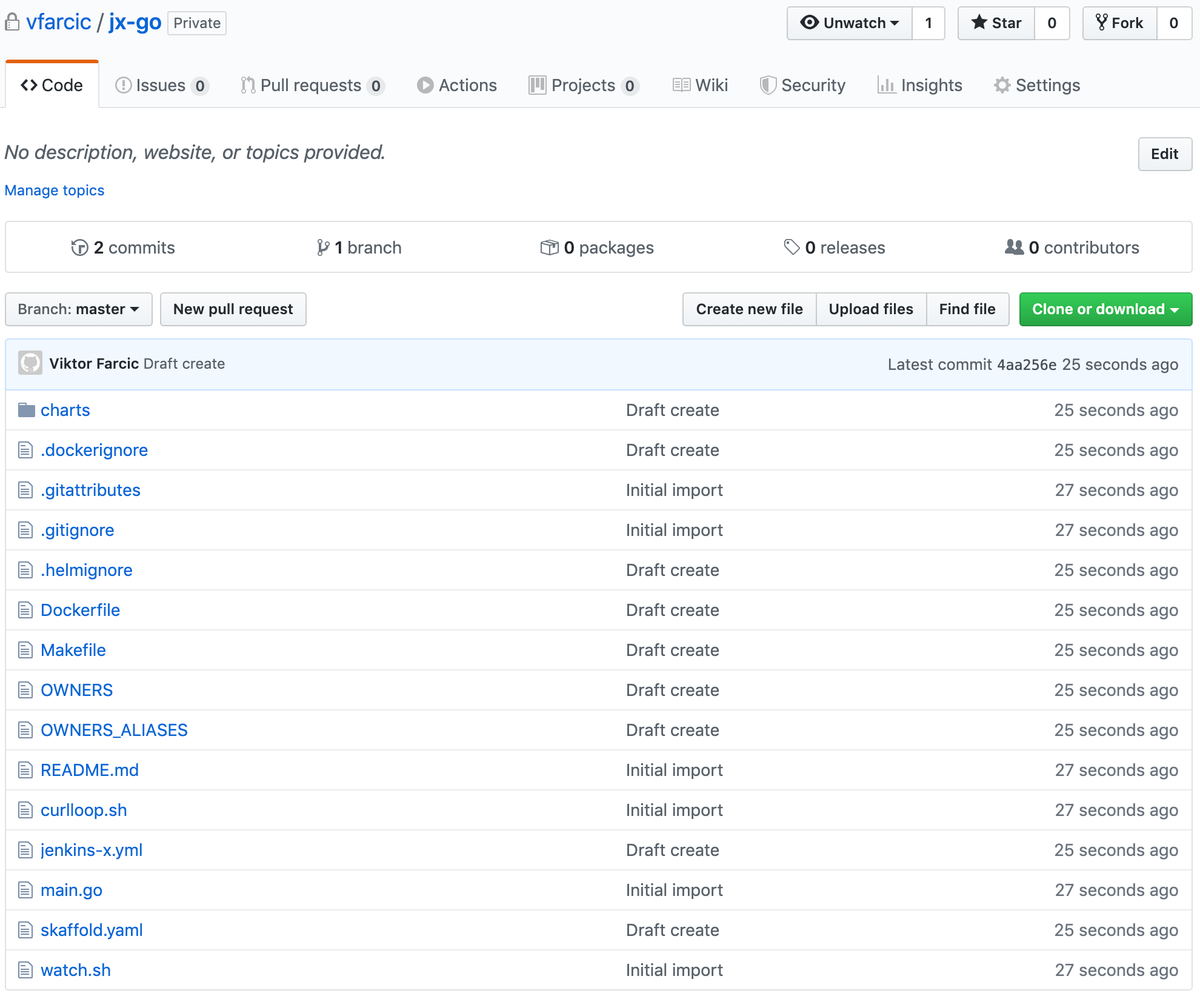Exploring Quickstart Project Files
This lesson explores the various files inside the jx-go repository.
Exploring the Github repository#
Let’s see what Jenkins X created and pushed to GitHub.
⚠️ Please replace
[...]with your GitHub username before executing the commands that follow.
We can see that Jenkins X created quite a few files.

Exploring the local project repository#
The repository was also created locally, so let’s take a closer look at the generated files.
The output is as follows:
The Makefile#
Let’s go through each of those files and directories and explore what we got. The first in line is Makefile.
I won’t go into much detail about the Makefile since it is made specifically for Go applications, and that might not be your favorite language. Not all quickstart packs use Makefile. Instead, each tends to leverage methods appropriate for the given language and programming framework to accomplish the required tasks. In this case, the Makefile has targets to perform operations to build, test, install, and so on.
The Dockerfile#
The next in line is Dockerfile.
The output is as follows:
In the case of Go, there’s not much needed. It uses a very lightweight base image (scratch), exposes a port, creates an entrypoint that will execute the binary (jx-go), and, finally, it copies that binary.
Skaffold#
Unlike Dockerfile, Skaffold might be a tool you haven’t used before.
Skaffold handles the workflow for building, pushing, and deploying applications to Kubernetes clusters, as well as for local development. We’ll explore it in more detail later. For now, we’ll take a brief look at the skaffold.yaml file.
What matters, for now, is the build section that defines the template with the tag of the image we’ll build in our pipelines. It consists of variables DOCKER_REGISTRY and VERSION whose values will be set by our pipeline at runtime.
The charts directory#
Next, we have the charts directory that contains Helm definitions that will be used to deploy our application to Kubernetes. We won’t go into much detail about Helm, but only the bits necessary to understand what Jenkins X does. If you have never used Helm, I recommend consulting the official documentation or read The DevOps 2.4 Toolkit: Continuous Deployment to Kubernetes book I published previously. For now, I’ll summarize it by stating that Helm is a package manager for Kubernetes.
Let’s take a look at what’s inside the charts folder.
The output is as follows.
There are two subdirectories.
-
jx-go: This contains the Helm definition of the application we’ll deploy to different environments (e.g., staging, production). -
preview: This is mostly used with pull requests.
The reason for this separation lies in the ability to differentiate one from the other. We might need to customize preview with different variables or add temporary dependencies. We’ll explore the preview charts in more depth later. Right now, we’ll focus on the jx-go chart.
The jx-go directory#
If you used Helm, the structure should be familiar. If that’s not the case, you might want to stop here and explore Helm in more detail. The DevOps 2.4 Toolkit: Continuous Deployment to Kubernetes might be a good read if you have time, otherwise, check the official documents.
The jenkins-x.ymlfile#
The last file in the jx-go directory is jenkins-x.yml.
We will go into more detail about this alter, but for now, think of it as a pipeline definition that points to the pipeline, go, defined in a different repository and used with all applications written in GoLang.
Jenkins X did not only create a Git project, but also a pipeline in the cluster, as well as a GitHub webhook that will trigger it.

From now on, every time we push a change to the repository, that webhook will trigger a build in Jenkins X.
Next, let’s look at how we can retrieve almost any information related to Jenkins X in the command line through jx.
